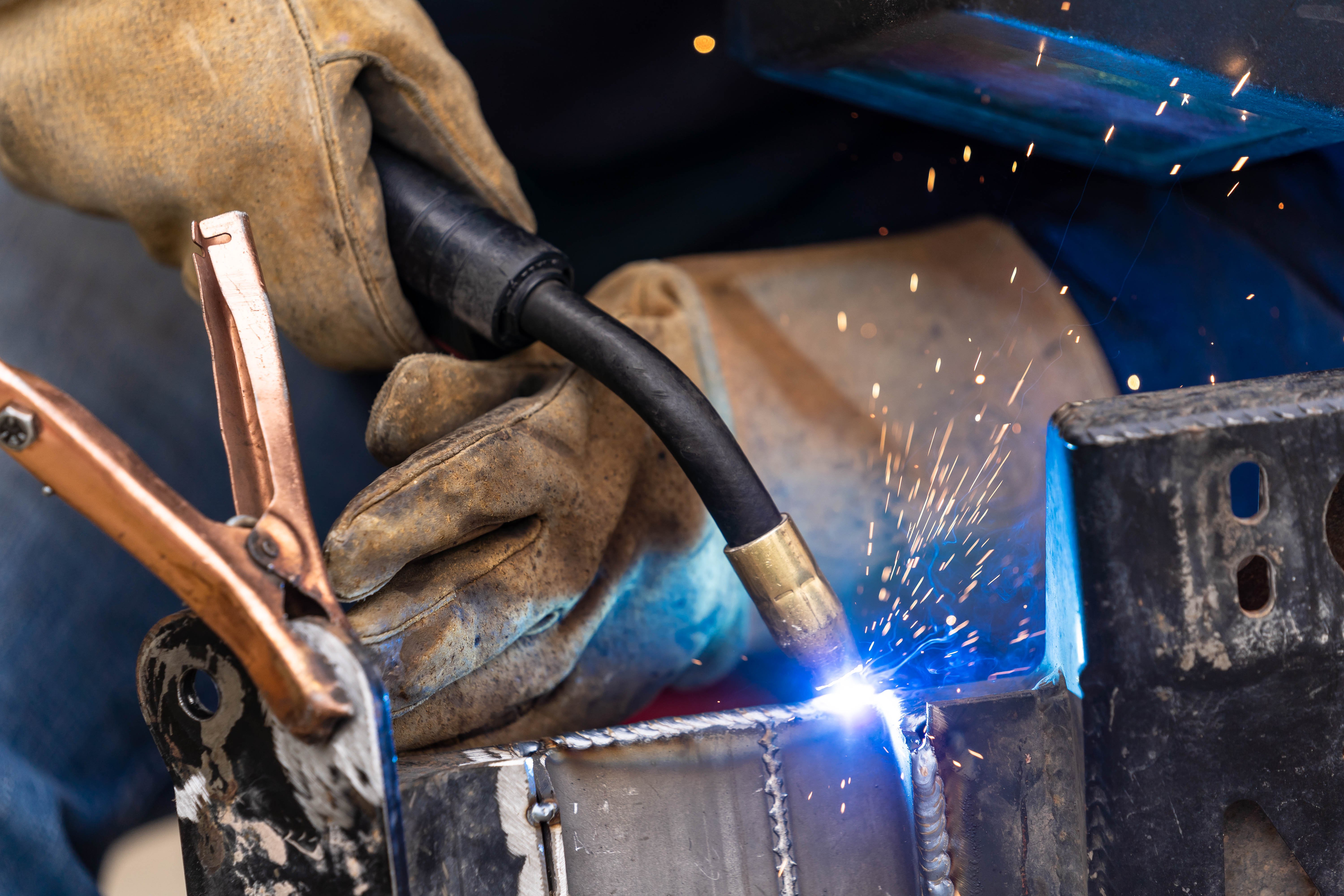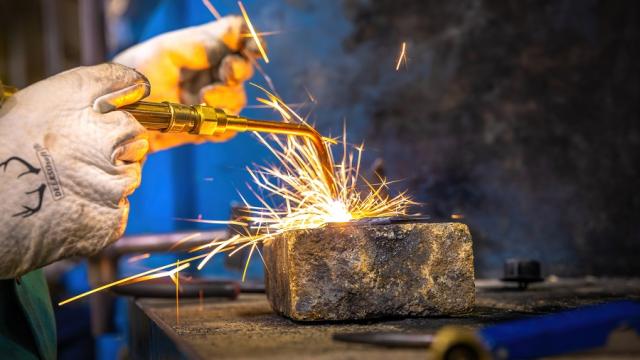Correcting cracking in welded joints: tips from Montana Mobile Welding and Repair Fabrication
Typical Welding Fixing Issues and How to Address Them Successfully
Welding fixings frequently come across a variety of problems that can endanger the honesty of the final product. Usual issues include poor infiltration, porosity, and misalignment, to name a few. Each problem provides unique challenges that need details approaches for resolution. Recognizing these issues is important for welders aiming to improve their results and skills. This discussion will certainly explore these typical welding fixing problems and reliable approaches to resolve them.
Inadequate Penetration
Poor infiltration takes place when the weld steel fails to completely fuse with the base material, resulting in weak joints and prospective structural failures. This issue commonly stems from not enough heat input, incorrect electrode angle, or inappropriate welding rate. Welders may experience insufficient infiltration because of a miscalculation of the essential criteria for a specific material density or type. Additionally, contamination on the base material's surface area can impede effective bonding, exacerbating the trouble. To address inadequate infiltration, welders ought to assure suitable setups on their tools and preserve a tidy job surface. Regular assessment of welds is recommended to identify any kind of shortages early, enabling timely corrections and the avoidance of jeopardized structural stability in bonded settings up.
Porosity
Porosity is an usual flaw in bonded joints that manifests as little gas bubbles trapped within the weld steel. This defect can compromise the integrity of the weld, leading to decreased strength and potential failing under anxiety. Belgrade. Porosity generally emerges from contamination, dampness, or inappropriate welding techniques, which enable gases to get away into the molten weld pool. To resolve porosity, welders must ensure correct surface area preparation, keep a clean workplace, and use suitable welding specifications. In addition, selecting the right filler material and protecting gas can minimize gas entrapment. Routine inspection and screening of welds can assist identify porosity early, ensuring prompt restorative actions are taken, consequently preserving the top quality and integrity of the welded framework
Misalignment
Misalignment in welding can arise from numerous aspects, including improper configuration and thermal expansion. Recognizing the origin is vital for reliable resolution. Several correction techniques are available to realign components and guarantee structural integrity.
Reasons for Misalignment
Welding imbalance frequently originates from a variety of underlying issues that can jeopardize architectural honesty. One primary cause is incorrect fit-up of components prior to welding, which can lead to spaces and unequal surfaces. Variations in thermal growth throughout the welding procedure can likewise lead to distortion, specifically if the products being joined have various coefficients of growth. In addition, poor fixturing and clamping may stop working to hold components securely in location, leading to movement during welding. Inadequately kept tools, consisting of welding equipments and devices, may introduce incongruities in the weld grain, additional adding to imbalance. Operator error, stemming from insufficient training or experience, can also play a significant duty in developing misaligned welds.

Modification Methods Readily Available
Dealing with misalignment efficiently needs a combination of rehabilitative methods tailored to the specific concerns at hand. One typical approach is the usage of components or jigs to hold components in the appropriate position throughout welding, guaranteeing consistent placement. Furthermore, pre-heating the materials can aid decrease distortion and improve fit-up. For considerable imbalance, mechanical realignment strategies, such as utilizing hydraulic jacks or clamps, can be employed to correct the position prior to welding. Post-weld warmth therapy may likewise be needed to eliminate anxieties triggered by misalignment. Mindful inspection and adjustment throughout the arrangement phase can protect against misalignment concerns from coming to be substantial problems, advertising a smoother welding process and boosting general architectural stability.
Distortion
Distortion is a typical challenge in welding that can occur from different factors, consisting of irregular cooling and heating. Understanding the reasons for distortion is necessary for implementing effective avoidance methods. Addressing this issue not just boosts architectural honesty but likewise enhances the total high quality of the weld.
Sources of Distortion
When based on the extreme heat of welding, materials commonly undertake adjustments that can result in distortion. This sensation primarily develops from thermal growth and contraction throughout the welding process. As the weld area warms up, the material broadens; upon cooling, it acquires, which can create interior tensions. Furthermore, uneven heating throughout a workpiece can aggravate these stress and anxieties, leading to bending or bending. The sort of material also plays a considerable duty; steels with differing thermal conductivity and coefficients of expansion may respond in a different way, resulting in unpredictable distortions. Inadequate joint design and inadequate fixturing can add to imbalance throughout welding, boosting the possibility of distortion. Comprehending these reasons is important for efficient welding repair and prevention techniques.
Prevention Techniques
Reliable avoidance methods for distortion during welding emphasis on managing warmth input and guaranteeing correct joint layout. Keeping a regular warmth input assists to lessen thermal development and tightening, which can lead to distortion. Making use of methods such as pre-heating the work surface can also minimize the temperature level slope, advertising uniform home heating. Additionally, picking appropriate joint designs, such as T-joints or lap joints, can boost security and decrease stress focus. Applying correct fixturing to safeguard the work surfaces in position even more aids in keeping alignment during the welding process. flare bevel weld Staggered welding sequences can distribute warmth a lot more equally, protecting against localized distortion. By applying these strategies, welders can substantially lower the possibility of distortion and improve the overall quality of their welds.
Fracturing
Splitting is a common issue experienced in welding repair services, usually arising from numerous aspects such as inappropriate air conditioning rates, product option, or insufficient joint prep work. The event of splits can substantially compromise the integrity of the weld, resulting in prospective failings during operation. To address this concern, welders must initially examine the origin, making sure that products work and properly selected for the particular application. Additionally, managing the air conditioning price during the welding procedure is necessary; quick air conditioning can generate anxiety and lead to cracking. Correct joint design and prep work also add to minimizing the danger. Implementing these techniques can enhance weld high quality and resilience, ultimately decreasing the probability of breaking in completed weldments.

Insufficient Blend
A significant issue in welding repair work is insufficient fusion, which happens when the weld steel does not effectively bond with the base product or previous weld passes - Montana Mobile Welding and Repair Welding. This problem can cause weak points in the joint, potentially endangering the integrity of the welded framework. Aspects contributing to incomplete blend consist of insufficient heat input, inappropriate welding method, and contamination of the surface areas being joined. To address this issue properly, welders should guarantee proper pre-weld cleaning and surface prep work, as well as readjust their welding specifications to attain sufficient infiltration and fusion. Normal assessment throughout the welding procedure can likewise assist recognize incomplete fusion early, allowing for timely corrective measures to boost the general high quality of get more the weld
Overheating
While welding repair work can enhance architectural integrity, overheating presents a substantial challenge that can result in product deterioration. Extreme heat during welding can modify the mechanical residential or commercial properties of steels, leading to decreased strength, increased brittleness, and warping. This phenomenon is especially vital in high-stress applications where structural dependability is paramount. Identifying getting too hot can involve aesthetic assessments for staining or distortion, along with checking temperature level throughout the welding procedure. To reduce the dangers connected with getting too hot, welders must use proper techniques, such as controlling heat input, adjusting traveling rate, and using appropriate filler materials. In addition, executing pre- and post-weld warm therapies can assist bring back product residential or commercial properties and boost the general top quality of the repair, guaranteeing long-term efficiency and safety.
Regularly Asked Concerns
What Are the Typical Indicators of a Welding Problem?

Just How Can I Evaluate My Welds for Quality?
To check welds for quality, one can make use of visual examinations, ultrasonic testing, and radiographic methods. Each method ensures structural stability, recognizes problems, and verifies adherence to defined criteria, eventually boosting the integrity of the bonded joints.
What Safety Preventative Measures Should I Take While Welding?
When welding, one ought to focus on security by wearing ideal personal protective tools, making sure proper air flow, protecting flammable products away, keeping a tidy office, and recognizing surroundings to stop injuries and accidents.
Can I Repair a Weld Without Renovating the Entire Joint?
Repairing a weld without redoing Continue the whole joint is possible, depending on the damage (Montana Mobile Welding and Repair). Strategies such as grinding, adding filler material, or utilizing a welding process can effectively address particular imperfections while protecting the surrounding structure
What Tools Are Crucial for Reliable Welding Services?
Important devices for effective welding fixings include a welding equipment, cable brush, grinder, safety equipment, clamps, and filler materials. Each tool plays a crucial duty in making certain quality and safety during the fixing procedure. Porosity typically emerges from contamination, wetness, or incorrect welding strategies, which permit gases to get away into the molten weld swimming pool. Improperly kept devices, consisting of welding machines and tools, might introduce inconsistencies in the weld bead, further adding to imbalance. When subjected to the intense warmth of welding, products commonly go through modifications that can lead to distortion. Breaking is a common concern run into in welding repair work, commonly resulting from different factors such as improper air conditioning prices, material choice, or insufficient joint prep work. A considerable issue in welding fixings is insufficient combination, which happens when the weld steel does not appropriately bond with the base product or previous weld passes.